Global email volume was set to reach almost 392 billion messages a day in 2025. At the same time, up to 25-30% of contact lists decay each year. For agencies, that means wasted budget and lost reach, together with damaged sender reputation if nothing is done.
This is where a powerful email verification tool makes the difference.
From bulk email validation to real time verification, agencies can keep lists clean and protect domain health – all to keep client campaigns out of the spam folder.
Today, we take a look at the top 5 software options for agencies like yours.
Why agencies need the best email verification tools
Agencies often juggle many client accounts at once. Each project depends on reliable contact lists. Invalid and risky emails block results and harm inbox placement across all campaigns. A single rise in bounce rate can cut deliverability by more than 10%.
Using an email verification service helps agencies validate email addresses before launch. This cuts down on hard bounces, protects sender reputation, and keeps customer data usable.
Tools with disposable email detection, blacklist monitoring, and detailed reports give agencies confidence that every email address exists and is safe to use.
Agencies also need pricing flexibility. Some prefer monthly subscriptions, while others choose pay-as-you-go credits. Free plan options help test the system before scaling. With the right email verification software, agencies can build repeatable email marketing strategies without risking client trust.

Bulk email verification: how it helps agencies scale
For agencies, time is money. Cleaning one address at a time is not realistic when a client hands over a file with 50,000 contacts. Bulk email verification solves this problem.
Upload a list into the email validation software, and the tool checks every entry, detecting disposable email addresses, spam traps, and risky domains.
Many email verification tools integrate with Google Sheets or popular email marketing tools.
That means agencies can run bulk email validation, then push verified contact details back into their campaigns with no manual work. A clean list keeps open rates steady, helps with inbox placement, and keeps mail servers from blocking large sends.
For sales and marketing teams inside agencies, bulk checks also speed up onboarding new clients. Instead of waiting weeks to run first campaigns, they can validate lists fast and focus on building automated follow-ups or testing email marketing strategies.
Top 5 email verification tools for agencies in 2026
The market is full of email validation tools, but not all are built for agency needs.
Some focus on a user-friendly interface, others on advanced reports or real-time verification.
In the next section, we’ll look at five top email verification tools that combine power, reliability, and pricing models suited for agencies.
#1 Bouncer – the best single and bulk verification tool for agencies
Bouncer stands out as the most reliable choice for agencies. It offers both real time verification through its API and bulk checks for large databases. Agencies can upload thousands of contacts at once or integrate Bouncer directly into their workflows.
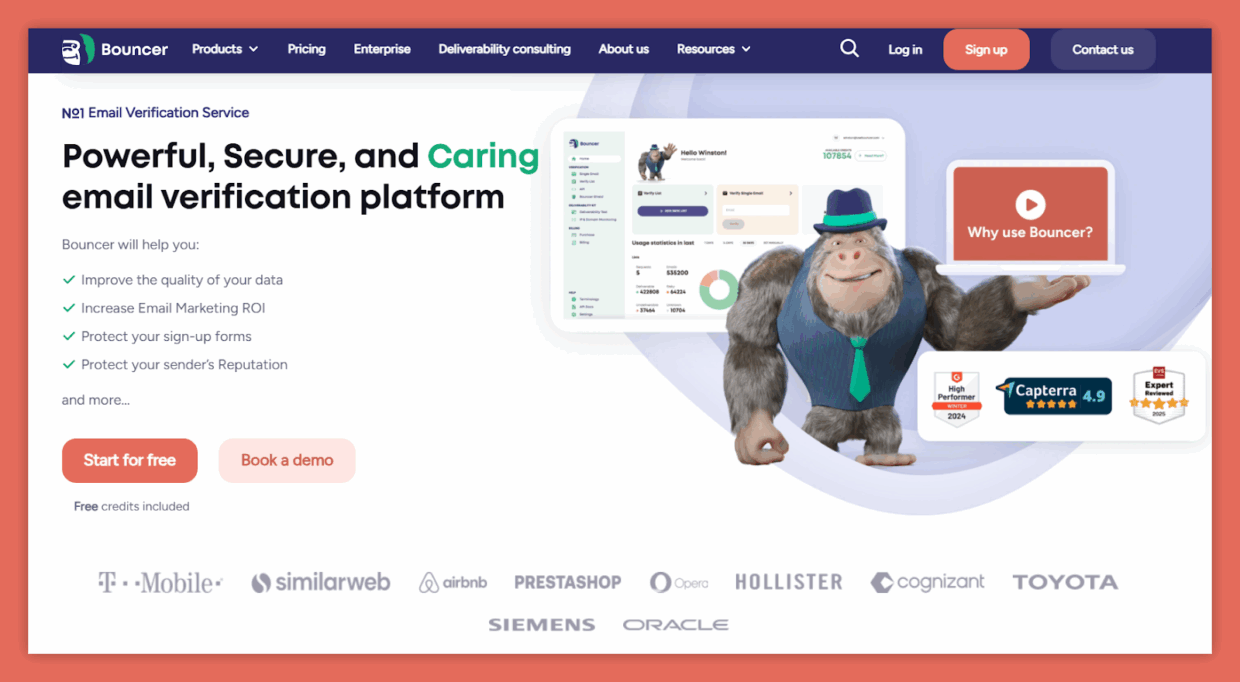
What makes Bouncer unique is accuracy and fairness. The tool achieves an accuracy rate of over 99.5%, with fewer than 2% “unknown” results. Agencies only pay for clear results – no charge for duplicates or unverifiable addresses. Pricing is transparent, with credits that never expire, which works well for agencies with seasonal campaigns.
Bouncer also goes beyond basic syntax checks. Features like Bouncer Shield proactively block invalid emails before they enter a system, and the Deliverability Kit predicts bounce rates to help agencies plan campaigns with confidence. Toxic email detection helps identify spam traps, disposable accounts, and other risky addresses.
Security is another strong point.
- Bouncer is GDPR compliant by design.
- It anonymizes uploaded data.
- It also lets users permanently delete verification results.
Many agencies praise its personal support: chat, email, and even video calls are available when needed.
Compared to other tools, Bouncer performs better on bounce prediction, reporting, and handling toxic addresses. For agencies, that means safer campaigns, better inbox placement, and no hidden costs.
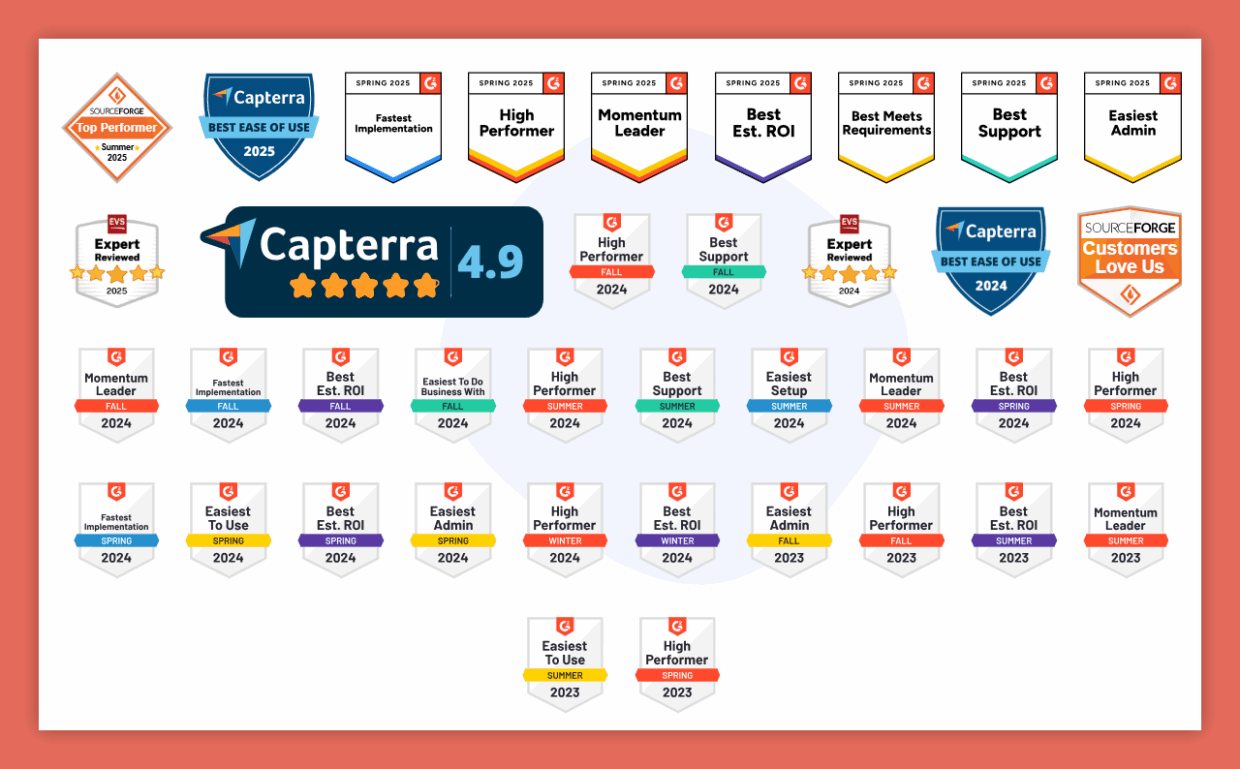
#2 NeverBounce
NeverBounce is a well-known player with a focus on speed and integrations. Agencies appreciate its ability to remove up to 99.9% of bounced emails and run automated, near-daily cleaning. It integrates with more than 80+ platforms, making it easy to connect with existing email marketing campaigns.
The pricing model is pay-per-email, ranging from $0.008 to $0.002 per email depending on volume. Free tools and analysis credits are available to test the service. This flexibility works for agencies that prefer pay as you go billing.
Something to consider: Some agencies mention delays when verifying very large lists, and customer support can be slow to respond during peak times.
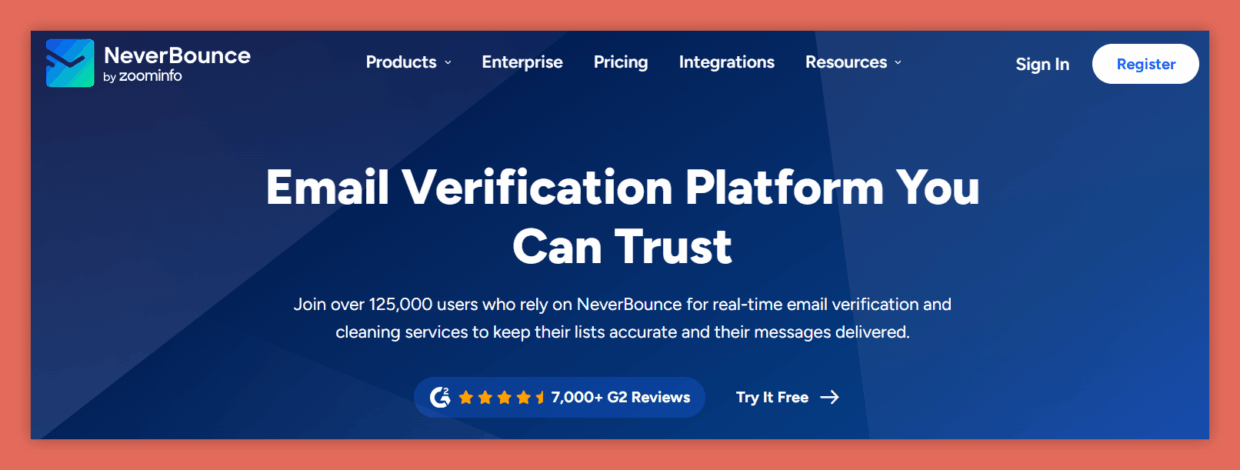
#3 ZeroBounce
ZeroBounce has been around since 2015 and is trusted by many enterprise and mid-market companies. It checks whether email addresses are correct and deliverable, removes outdated contacts, and helps improve inbox placement.
Key features include role-based detection, disposable email checks, MX and SMTP validation, greylist detection, and spam trap identification. The tool claims 99% accuracy, though independent reviews place it closer to 90%. Speed can be an issue as processing 10,000 addresses may take nearly two hours, slower than competitors.
Still, ZeroBounce shines in compliance. It meets GDPR, SOC2, and HIPAA standards, and offers over 60+ integrations with platforms like Mailchimp and Constant Contact.
Something to consider: The slow turnaround on bulk files and limited transparency on spam trap detection make it less ideal for agencies running fast-moving campaigns.
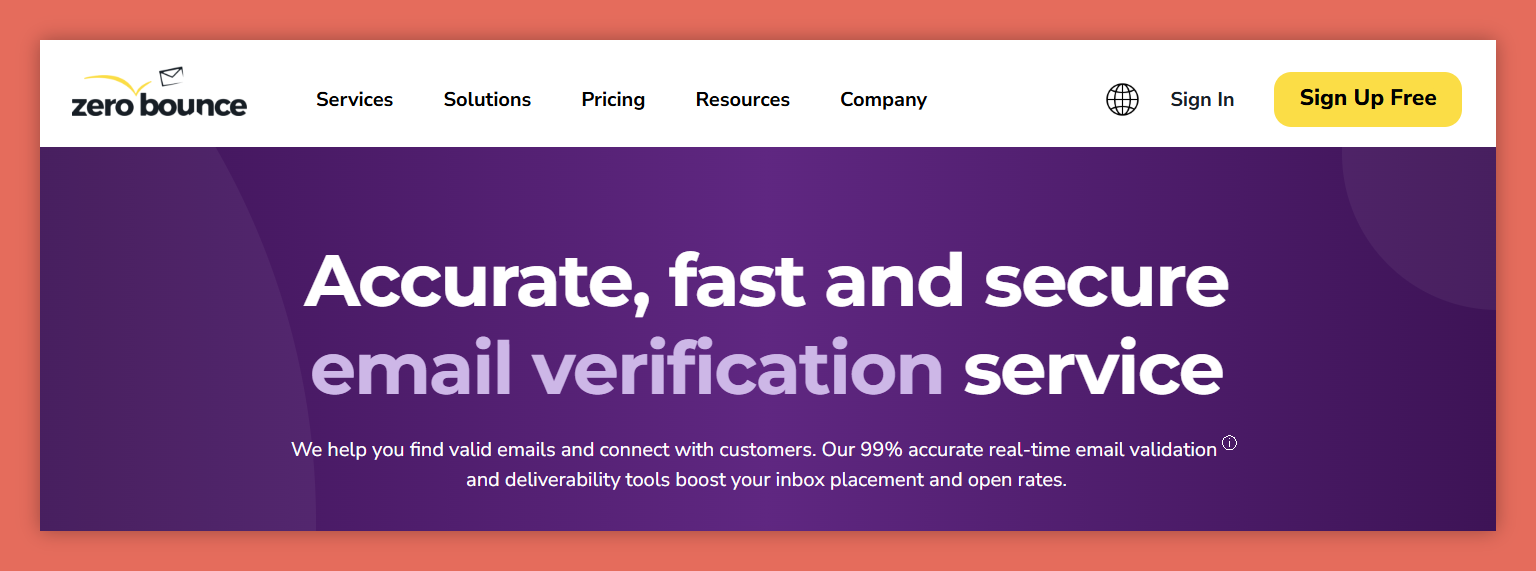
#4 Kickbox
Kickbox is known for its accuracy and clear user experience. It provides list verification through drag-and-drop uploads or API connection, and includes a proprietary Sendex™ Score to rate email quality.
Kickbox identifies syntax errors, typos, disposable domains, and role-based addresses such as help@ or sales@. Accuracy is advertised at 95-99%, and speed is one of its main strengths. Agencies handling time-sensitive campaigns value this fast performance.
Pricing is flexible, starting from $5 for small lists and scaling up to enterprise levels. You can also test up to 100 emails for free.
Something to consider: Users report that support is not always reliable, and the tool sometimes flags too many addresses as “risky” without clear reasons.
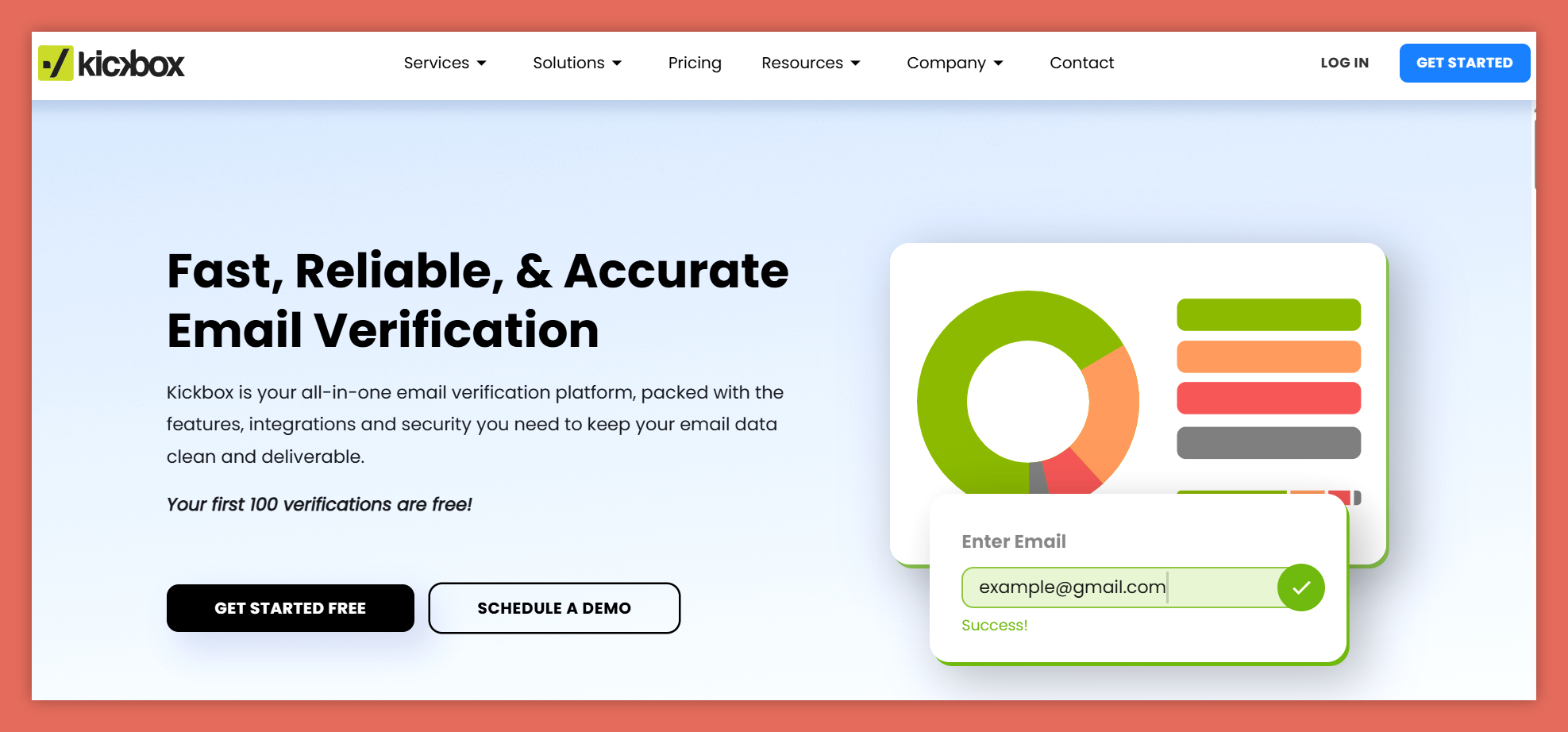
#5 Emailable
Emailable is another tool for agencies, often compared directly to Bouncer. It covers syntax, MX, and SMTP checks, and detects catch-all and disposable addresses. Accuracy is rated around 99%, and pricing is competitive: for 100,000 verifications, $420, versus Bouncer’s $400.
While Emailable performs well in basic verification, it lacks advanced features like toxicity detection or bounce prediction. Reporting is also seen as less intuitive compared to Bouncer.
Something to consider: Agencies handling complex campaigns may find Emailable too basic, since it lacks deeper insights and more advanced deliverability tools.
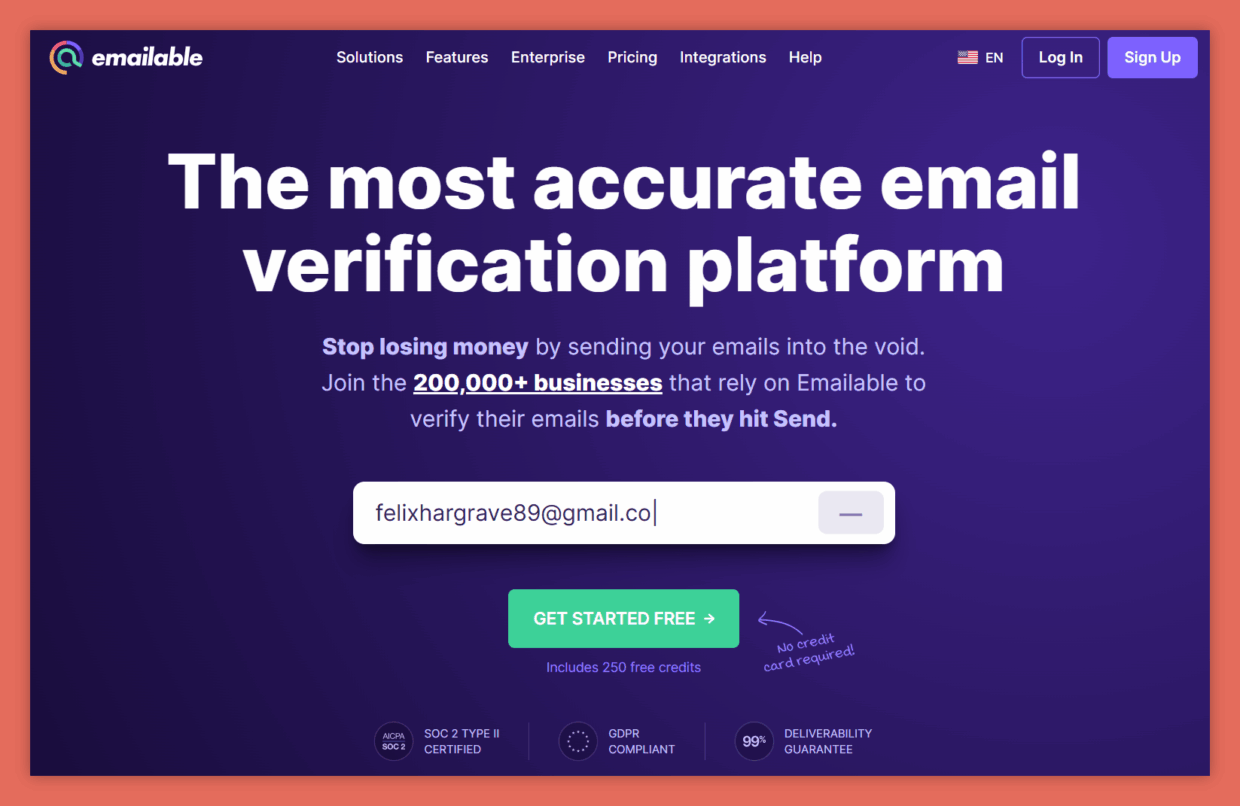
Agency email deliverability and domain validation explained
For agencies, deliverability means every client’s message reaches the inbox, not the spam folder. A poor sender reputation, invalid addresses, or risky email addresses can quickly damage results. That is where deliverability tools and domain validation come in.
Domain validation checks if an email address is linked to a real, active mail server. It is one part of the email verification process, often built into an email verification API. When agencies verify email addresses at the domain level, they protect clients from wasted sends and poor inbox placement.
In 2024, the average deliverability rate across industries was 83.1%, which means nearly one in six emails never made it to the inbox. Agencies cannot risk those odds when running campaigns for paying clients.
Strong domain checks and clean lists also support inbox placement benchmarks.
Anything above 89% inbox placement is considered good, while numbers above 95% are excellent. By combining domain validation with other verification tools, agencies get closer to those top figures.
Comparing bulk email verifier vs. automated email verification
Agencies often ask: should we use a bulk email verifier or set up automated checks? Both methods solve different problems.
Bulk email verification is best when a new client delivers a long list of contacts. Upload the file, run the process once, and you get valid email addresses back. This approach works well before starting new email marketing campaigns.
Automated email verification runs in real time. With an API, every new signup or lead is checked instantly, blocking invalid addresses at the entry point. In fact, real-time verification can cut bounce rates by 50% compared to manual cleanup. It also reduces the risk of spam traps slipping into customer data, which is vital for long-term sender reputation.
Many agencies now use both. Bulk checks clean old lists, while automated verification guards new signups. Together, they keep bounce rates below 2%, the level needed to protect inbox placement and avoid blacklists.
Accurate email validation for agency campaigns – tips
Accurate validation is the heart of a safe campaign. Agencies can use the following tactics to stay ahead:
- Check more than syntax. Many invalid addresses look correct but do not connect to a mail server. Domain-level validation is key.
- Use disposable email detection. Temporary inboxes often bounce within days. Catching them early saves credits and keeps lists clean.
- Pick a tool with detailed reports. Agencies need to show clients which risky email addresses were caught and why. Clear reporting helps with trust.
- Adopt ongoing checks. Contact lists decay fast; 3-4% of addresses go stale each month. Running validation quarterly keeps data fresh.
With these steps, you can protect your clients’ campaigns and keep inbox placement high, even in tough industries where deliverability averages hover around 80-82%.
Beyond email verification: choosing the right email marketing platform
Email verification is only one part of a larger picture. Agencies also need an email marketing tool that works well with verified contact details. A platform with integrations to other verification tools, pay as you go pricing, or support for importing credits can make life easier when juggling many clients.
Agencies should also look for features like blacklist monitoring, email finder add-ons, and automated follow ups. With such large daily email volume, only platforms built for scale can keep campaigns safe.
The best mix is a reliable email validation tool paired with an email service provider that respects sender reputation. That combination gives agencies the confidence to run campaigns without risking spam folder placement.
Picking the right email address verification tool
Agencies have plenty of options when it comes to email validation software in 2026. Each tool has its strengths, from fast bulk checks to wide integrations.
The right tool is the one that balances accuracy, fair pricing, and advanced protection against invalid and risky addresses.
Bouncer wins in these areas. With spot on accuracy, credits that never expire, and features like Shield and the Deliverability Kit, it goes further than other verification tools.
Agencies get safer campaigns, cleaner lists, and stronger inbox placement. All without paying for unknown or duplicate results.
If your agency manages multiple clients and wants a trusted partner for single checks or bulk lists in real time, Bouncer is built for you.
👉 Start with Bouncer today: test it for free, or book a demo to see how it can keep your client campaigns out of the spam folder.


